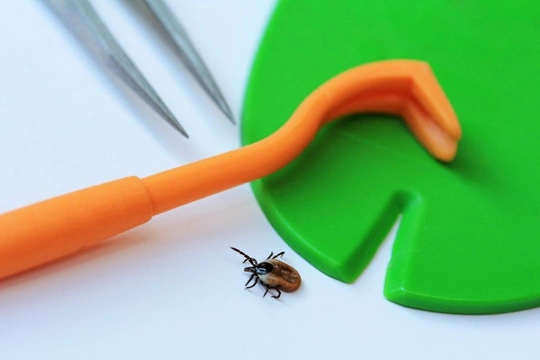
Five incorrect ways of removing a tick
Ticks are small, repulsive-looking parasites from the arachnid family, which can latch on to the skin of pets like cats and dogs (and even people), where they pierce the skin to feed on their blood.
These unpleasant parasites are not only rather horrible but can also pose a risk to the health of your cat or dog, as they can spread diseases and also, cause localised reactions and infections in the area of the bite.
For animals that have a serious tick infestation (which rarely occurs in pets) they can also drain so much blood from the animal that it leads to anaemia, yet another potential threat carried by these small, ugly creatures!
As spring approaches and the weather warms up, ticks begin to become more active, and can usually be found in long grass and in boggy or marshy areas, where they wait to latch onto passing mammals.
Dog and cat owners often have to remove a couple of ticks from their pet each year, particularly those that live in areas where ticks are rife-and everyone has their own way of going about it, and finding out what works best for them. However, if you’re faced with your first tick or don’t have anything to hand to remove it with, you might be asking around to find out how to do it-and some of the advice you receive might not be the best!
In this article, we will share five incorrect ways of removing ticks to avoid in the future, as well as a little information on why they are ineffective. Read on to learn more.
Using flat tweezers
Before tick twisters became the most accepted method of removing ticks from pets, people used to use all sorts of methods to remove ticks from pets, with various degrees of success! Tweezers were one of the most common of these, because they allow you to grasp the tick behind the head and remove it.
However, removing a tick with tweezers can serve to pinch the body of the tick and push toxins under the pet’s skin. This means that using flat tweezers is not a good idea, and even if using sharp tweezers, you should proceed with caution and pluck the tick out by the head, not the body.
Wiggling the tick
Another old piece of tick wisdom involved wiggling or rocking the tick to disengage the head before plucking the tick out, but this is not only unnecessary but can once again lead to the head of the tick breaking off. When you have grasped the tick firmly but without squeezing too hard, the tick should release and come back out.
Using your fingers
When you’re out walking or have no other tools or equipment to hand, you might be tempted to use your fingers to remove the tick, but this is again not a good idea and it is better to wait until later when you can look at getting the tick out properly.
Not only is it rather unhygienic to touch a tick-which as mentioned, can spread disease-with your fingers, but you will not be able to get the tick precisely between the head and the body, which means you will only crush the body and once more, leave the tick lodged in the skin.
The alternative to this is that you may break the body of the tick off, and removing the head alone is much harder.
Covering the tick in Vaseline
The theory behind this one is that the tick will suffocate under the Vaseline, and drop off naturally once it is dead. However, ticks breathe at a much slower rate than mammals, and can potentially thrive for many hours without needing to breathe fresh air, and so the tick will essentially be able to wait you out and putting Vaseline is ultimately pointless!
Burning ticks off
Another method that used to be used historically was to burn off the tick, either using a match or the hot end of a piece of metal-like a poker from the fire. The theory here is that the heat will shock the tick into releasing-but in order to get close enough to the tick to touch them, you will also be unable to avoid burning your pet, and potentially singeing their fur.
Additionally, you’re more likely to kill the tick under the pet’s skin and leave it there, which is additionally risky due to the toxins that a dead or dying tick will release as they deteriorate and die. Additionally, the area you burned will be sensitive for your dog, and they will be much less willing to let you try to remove a tick again next time.
Safe removal
The most effective, safe and hassle-free method of removing a tick is by using a simple tool called a tick twister-or by taking your dog along to the vet and letting them do it.



